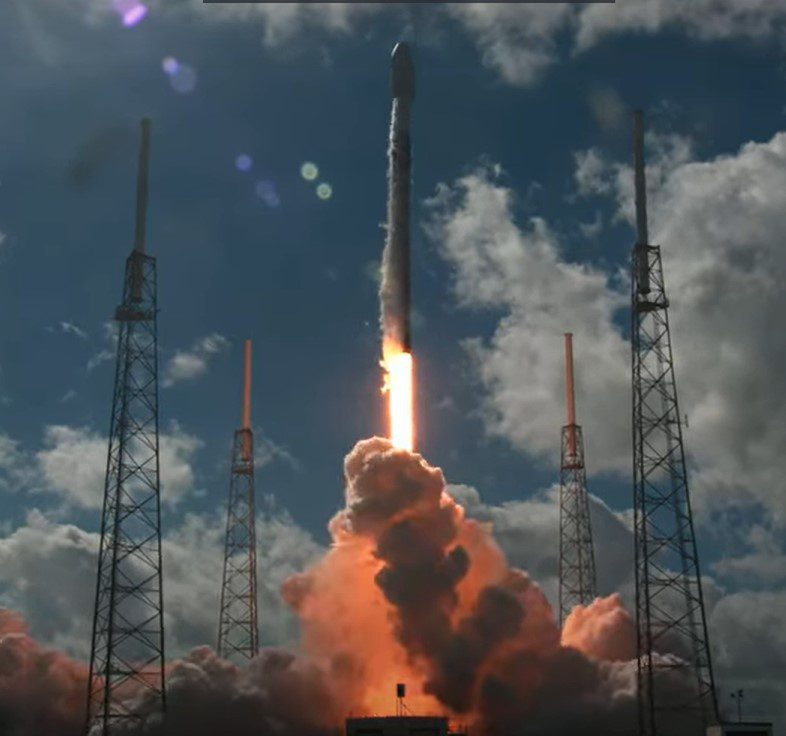SpaceX successfully launched a Falcon 9v1.2FT Block 5 launch vehicle carrying a pair of communication satellites from Cape Canaveral, USA at 1606 GMT on 12 November.
The vehicle carried Galaxy 31 and 32, a pair of C-band communication satellites to a super-synchronous geosynchronous transfer orbit which allows an easier inclination removal by the satellites as they raise themselves to their geostationary Earth orbits (GEO). The satellites were launched in a dual-stacked configuration, which enabled the simultaneous launch of both. Built by Maxar’s SSL division, the satellites use the 1300 bus design.
The mission is the third one by SpaceX for Intelsat, which plans to use Galaxy 31 and 32 to clear the C-band 300-400 MHz range for the Federal Communications Commission’s rollout of 5G services. The two satellites are the second pair of a total of seven new Intelsat satellites set to launch over the next six months, as part of Intelsat’s “Galaxy fleet refresh plan” which began with Galaxy 30 in 2020.
The launch also marked the final flight of the B1051 first stage, which was flown as an expendable stage for this mission, and the 14th launch of this booster.

The Intelsat Galaxy-31 and 32 mission was the 52nd for SpaceX in 2022 so far. Courtesy: SpaceX
Jonathan Freeman contributed to this story.








